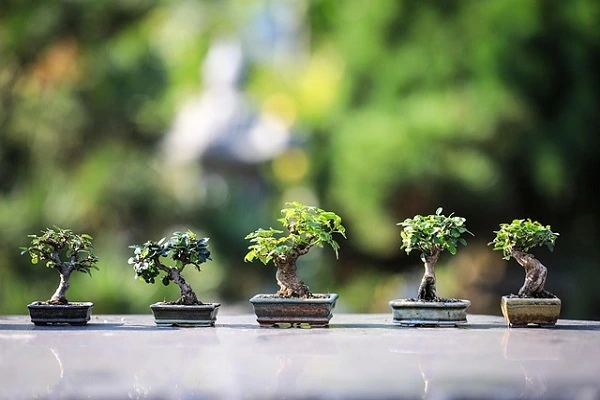If you’ve ever looked at your tiny apartment and thought, “I wish I could grow something in here,” you’re in the right place.
And no—you don’t need a backyard, a green thumb, or even a complicated hydroponic system.
Miniature leaf crops like microgreens, baby kale, and arugula are perfect for young DIYers just starting out. They’re fast-growing, fun to experiment with, and surprisingly low-effort.
What’s even better? You can grow them vertically, right inside your home, using things you probably already have. No need to spend big on gear right away.
In this guide, we’ll explore beginner-friendly crop techniques that fit small spaces—and even smaller budgets. Let’s dig in and get growing.
The Appeal of Tiny Crops in Tiny Spaces
Let’s be real—apartment living doesn’t exactly scream “farm life.” But with the right approach, even the tiniest space can become a productive little garden, especially if you start small—literally.
Miniature leaf crops are a game-changer for indoor growers. They don’t ask for much: no deep containers, no sprawling soil beds, and definitely no backyard. Just a bit of light, water, and love.
These crops—think baby spinach, arugula, and microgreens—are compact but powerful. They grow quickly, often within a week or two, and give you fresh, nutrient-packed greens right at your fingertips.
Even better? They’re lightweight, shallow-rooted, and stackable. That makes them a perfect match for vertical hydroponic systems. Shelves, racks, hanging containers—you name it.
If you’re working with limited light or limited time, these plants are incredibly forgiving. Many varieties thrive on windowsills or under low-cost LED grow lights. And since they grow fast, you can keep experimenting without long waits.
There’s something really rewarding about seeing your food grow in real-time—especially when you’re the one who made it happen with DIY setups. It’s satisfying, fun, and honestly, a little addictive.
So if you’ve got a small apartment and a big curiosity, miniature leaf crops are the perfect gateway into the world of hydroponics. Start small, grow smart, and discover what your space—and you—are really capable of.
Getting into the DIY Mindset: Experiment, Learn, Repeat
Starting something new—especially something like growing food indoors—can feel a little overwhelming at first. But here’s the truth: the best way to learn is to just start. No need for perfection. No need for expensive gear.
The beauty of being a DIY beginner is that mistakes are part of the journey. In fact, they’re kind of the secret ingredient. The more you play around, the faster you’ll figure out what works in your space.
Got an old takeout container? That can be a grow tray. A leftover sponge? That’s a growing medium. The DIY mindset isn’t about doing it all perfectly—it’s about doing it creatively.
Try one crop at a time. Test out different light spots in your apartment. Change up the water schedule and see what happens. This is how real learning sticks.
Don’t worry if something flops. That failed tray of baby spinach? It just taught you something. Every experiment, even the messy ones, moves you forward.
And if you’re the kind of person who loves a good before-and-after photo, this hobby will hook you fast. Watching your setup evolve from “random stuff on a shelf” to a leafy little corner of joy is incredibly rewarding.
So be curious. Be scrappy. Be okay with starting small and learning as you grow. That’s the heart of DIY—and it’s where all the magic begins.
Choosing the Right Miniature Leaf Crops for First-Timers
When you’re just getting started with DIY vertical growing, it’s smart to pick crops that are easy, fast, and forgiving. You want quick wins—plants that give you a boost of confidence while teaching you the basics of growing indoors.
Miniature leaf crops are ideal for this. They don’t need deep roots or months to grow, and they fit beautifully into small containers or vertical racks. Plus, they’re packed with nutrients and flavor.
Here are a few beginner favorites to try:
Microgreens
These are the ultimate starter crop. They grow in 7–10 days, require no fancy setup, and come in endless varieties like radish, broccoli, or mustard. Great for impatient growers.
Baby Spinach
Spinach is simple, low-maintenance, and grows in tighter spaces than you’d expect. You can harvest the young leaves early or let them mature a bit longer.
Arugula
Peppery and bold, arugula adds serious flavor. It grows quickly, tolerates less-than-perfect conditions, and thrives in shallow trays.
Baby Kale
Milder than full-grown kale, the baby version is tender, nutritious, and works well in small vertical systems.
Lettuce Mixes
Pre-mixed seed packs with different lettuce types are fun to grow. They add variety to your meals and give you a colorful tray of greens in under three weeks.
Start with one or two and see how they grow in your space. You’ll be surprised how addictive this becomes once those first leaves pop up.
A Simple Setup: No Pumps, No Problem
You don’t need flashy pumps or high-end gear to start. For your first DIY vertical setup, think “stack and grow.” Grab a few shallow trays or recycled plastic containers and stack them with spacers—wood blocks, empty cans, or even thick books.
Line each tray with a coconut coir or a seed-starting mat. These materials hold moisture without getting waterlogged. They’re lightweight, affordable, and easy to find online or at garden centers. No fancy hydroponic media required.
Drill or poke small holes in each tray’s bottom so excess water can drip down. Place a catch tray at the very bottom for overflow. This gravity-fed design keeps roots damp but not soggy, mimicking a very basic ebb-and-flow system.
Position the stack near a bright window. If natural light is scarce, try a clip-on LED grow light. You can snag one for under $20. Angle it so every level gets at least 6 hours of light—your greens will thank you.
Fill the top tray with your chosen crop’s seeds and mist them daily. As they sprout, their roots will grow downward, seeking moisture. Check the catch tray every couple of days and pour that water back up into the top—simple recirculation!
Maintenance is as easy as refilling a watering can. Top up your trays with fresh water and a drop of liquid fertilizer once a week. That’s basically it—minimal effort, big learning, tasty results.
With this no-pump, no-fuss rig, you’ve just created a beginner-friendly vertical garden. It’s budget-smart, space-saving, and a perfect launchpad for your DIY hydroponic adventures.
Light, Water, and Attention: What Really Matters at the Start
You don’t need to overthink things when you’re just getting started. Most beginner growers worry they’ll mess it up—but truthfully, your plants only care about a few key things: light, water, and a bit of daily attention.
Let’s talk light.
If you’ve got a sunny windowsill, that’s already a great place to start. South-facing windows get the most consistent sunlight, but east or west-facing can work too. No window? A small LED grow light does wonders for leafy crops.
Water matters—but not too much.
Your goal is to keep the growing medium moist, not soaked. Overwatering is the #1 rookie mistake. Use a spray bottle for seedlings and a gentle watering can as plants grow.
Pay attention—but don’t obsess.
Check your crops daily. Are they droopy? Maybe thirsty. Yellowing leaves? Time to adjust the light or nutrients. These small check-ins will teach you way more than a guide ever could.
Keep the air moving.
Even a small fan nearby helps prevent mold and strengthens stems. Just a gentle breeze—not a hurricane.
The truth is, your plants will tell you what they need if you’re watching. You don’t have to be perfect—just present. Once you get a rhythm, it becomes second nature. Think of it as a quick, calming ritual that feeds both you and your greens.
Common Mistakes Young DIYers Make
Every beginner hits a few bumps—totally normal. The great thing about miniature leaf crops is that they bounce back fast. Still, a few common missteps can slow you down, so let’s talk about how to avoid them from day one.
Mistake #1: Overwatering.
It’s tempting to “love” your plants with too much water. But soggy roots can rot fast. Touch the medium—if it feels damp, skip the watering. Let the plants breathe.
Mistake #2: Using garden soil indoors.
Regular outdoor soil invites bugs, mold, and mess. Stick with seed-starting mixes, coconut coir, or hydroponic-friendly grow pads. They’re cleaner and easier to manage.
Mistake #3: Not enough light.
Leggy, pale plants usually mean they’re stretching for sunlight. If your greens look weak, move them closer to the window or add a small LED grow light.
Mistake #4: Crowding your seeds.
More seeds don’t equal more harvest. Overcrowding leads to poor airflow and stunted growth. Spread them evenly so each seedling has room to shine.
Mistake #5: Ignoring airflow.
Still, humid air invites mold. A tiny fan (even from a laptop cooler) can improve air circulation and keep your greens strong and happy.
Learning these lessons early sets you up for success. Mistakes aren’t failures—they’re part of your DIY education. Keep growing, keep tweaking, and most importantly, keep enjoying the process.
Grow Tiny, Dream Big
Starting with miniature leaf crops might seem like a small step—but it’s a powerful one. You’re learning how to grow food, use your space wisely, and create something meaningful with your own two hands.
And the best part is that you don’t need to wait months to see progress. Within days, you’ll have fresh, living greens—grown by you, for you.
This isn’t just about lettuce. It’s about creativity, confidence, and connection. You’re building skills, experimenting, and turning your space into something a little more alive.
So keep planting, keep learning, and don’t be afraid to dream bigger with each tiny harvest. You’ve already started—and that’s the hardest part. Now let it grow.




